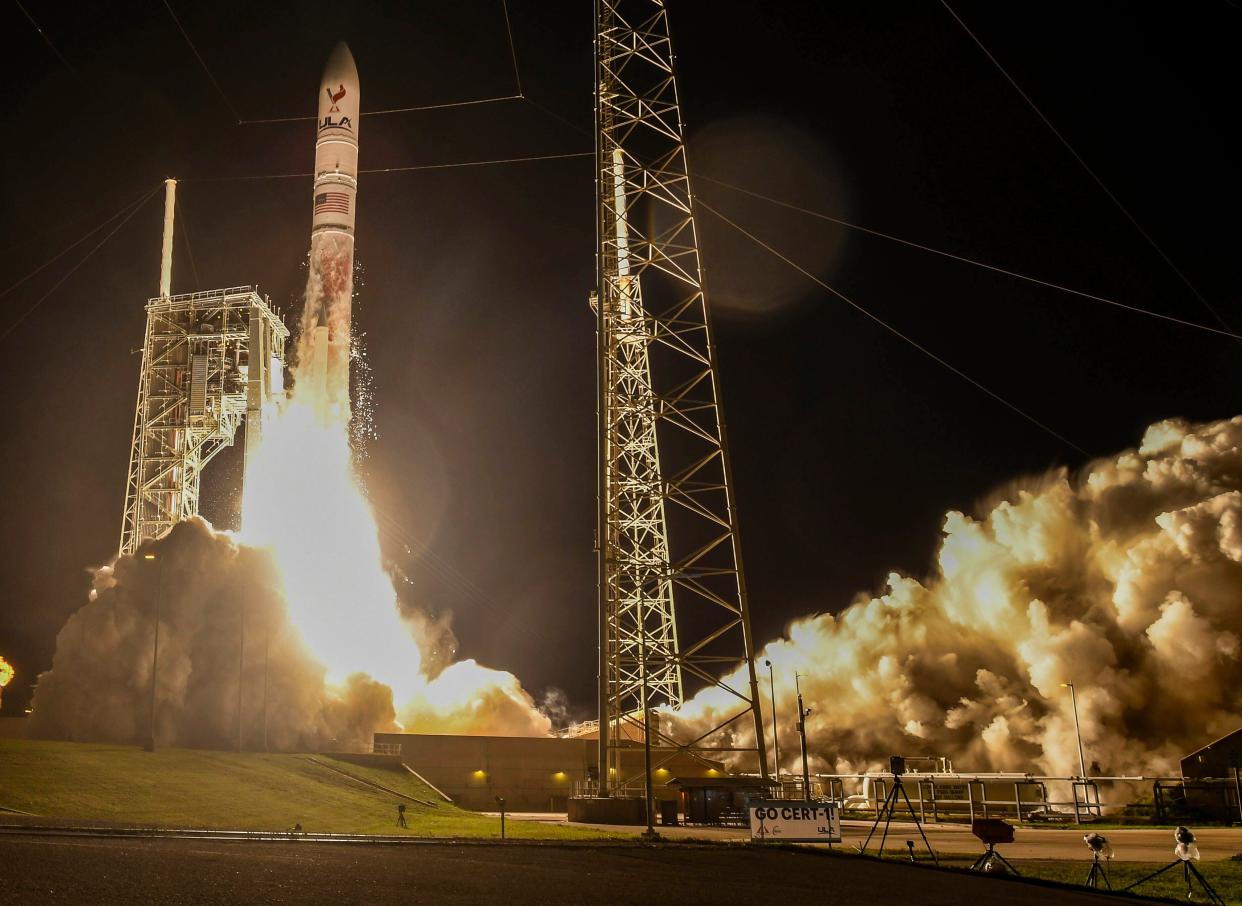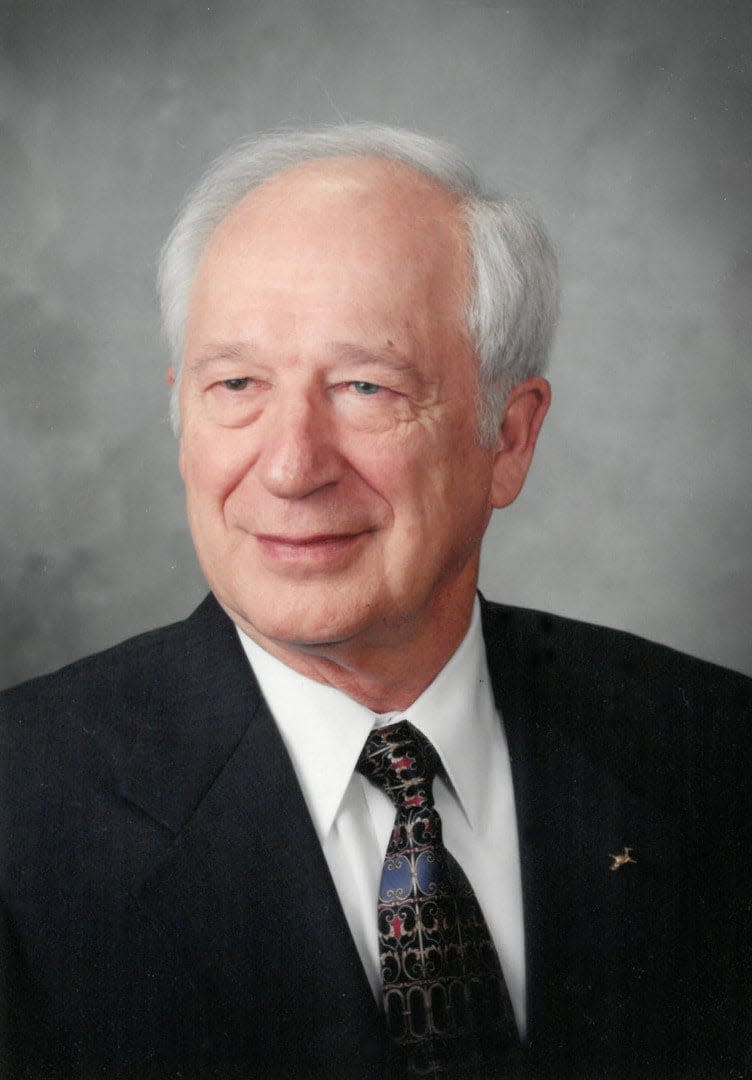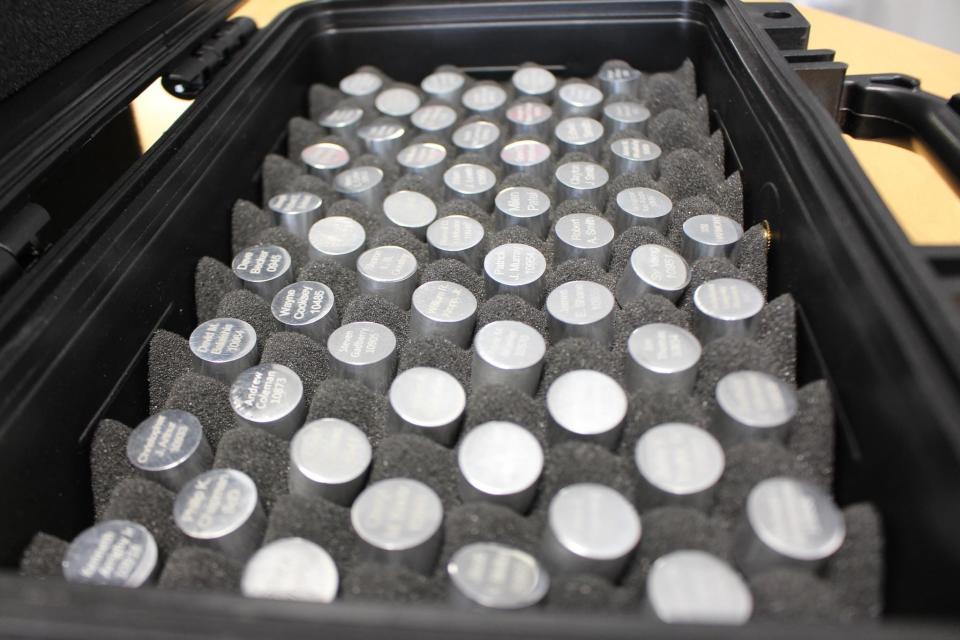Ohio engineer's cremated remains join Star Trek cast in final mission aboard Vulcan rocket

- Oops!Something went wrong.Please try again later.
- Oops!Something went wrong.Please try again later.
Space, as the "Final Frontier," evokes a certain poignant but hopeful appeal, especially when gazing at a streaking meteor or pondering future life on the moon or elsewhere in the cosmos.
It helped catapult a local man's life-long interest, including a career of more than five decades in aeronautical and astronautical engineering.
And at 2:16 a.m. Monday, a portion of the cremated remains of Gerald "Jerry" Gregorek were launched into what will be a permanent solar orbit aboard the inaugural launch of the United Launch Alliance Vulcan rocket and its unusual Celestis Deep Space Voyager Enterprise payload.

Launched from Cape Canaveral, Fla., a vial containing ashes from Gregorek, who died in 2019 at age 88, were propelled skyward, along with more than 200 others for an eternal orbit some quarter-million miles from Columbus.
Among Gregorek's fellow "passengers" will be most of the cast of the original Star Trek TV series including: creator Gene Roddenberry and actors, Nichelle Nichols (Uhura), James Doohan (Scotty) and DeForest Kelley (Bones). The space capsule also will contain DNA (hair) samples of George Washington, John F. Kennedy and Dwight D. Eisenhower) John F. Kennedy.
The cost for the one-way trip? A cool $13,000.
Celestis calls the opportunity "an affordable means for personal space migration." Its website, in travel brochure parlance, suggests the flights afford window seats and comfort.
"Fly as one or with family and friends on a personal voyage among the stars."
In actuality, the flights are symbolic, much like tombstones. A way to pay tribute to loved ones. And the cost helps fund space research and future missions.

Part of this mission, for example, is to "drop off" the Peregrine lunar lander that will explore the moon and search for frozen water. The New York Times on Monday reported that the lander had malfunctioned, however, and may not reach the moon's surface.
Devotion to aerospace, rocketry and family
Gregorek exhibited talent and intellect from a young age, earning the endearing nickname "Little Professor" by his family. He began building model airplanes at age 5.
Between 1958 and 1967, he earned three degrees from Ohio State University in aeronautical and astronautical engineering. He later served department chairman from 1991-1999. And he was director of the program's aerodynamics research laboratory.
He also was founder and long time adviser to Central Ohio Rocketry club.
Early in his career, NASA has considered Gregorek, a B-29 flight engineer in the Korean War, an astronaut candidate. But he declined the offer in order to stay with his family and an ailing child, said Pazia Schonfeld, Celestis spokeswoman.
Larry Rice, a long-time friend and fellow model rocketry enthusiast, said that Gregorek was dedicated to space flight and his family.
"He would enjoy it," said Larry Rice of Monday's launch. "He would be impressed that people thought enough to do that for him."
Rice, 67, recalled Gregorek as a runner, who used to compete with his son David, in events.
When David contracted Hodgkin's disease at age 10, his father decided to delve into model rocketry and a series of competitions, "something less competitive than running," Rice said.
Clifford Whitfield, a professor of aerospace engineering at OSU, watched the rocket launch live at 2:18 a.m. Monday.
"I wouldn't have missed it," Whitfield said. "He was a very important part of my life. I was his last doctoral student. I was basically an adopted son of his."
"I think he would have been humbled and honored."
The symbolism of such a flight is powerful.
"I think it's a way for people who are living ... to honor someone, and have it be memorialized as continually orbiting in space," Whitfield said.
Some might wonder if advances in DNA mapping and cloning might one day enable the creation of replicas of ourselves, using DNA or even ashes, if only in some distant part of the universe .
"We never know what technology will be like years from now," said Schonfeld. "Like a message in a bottle."
Celestis says hat once the upper stage of the rocket reaches its orbit, the Enterprise Flight (aptly named for the Star Trek TV star ship) will be renamed Enterprise Station - "humankind’s furthest outpost - where it will journey endlessly, perhaps awaiting discovery by a distant in time civilization."
dnarciso@dispatch.com
This article originally appeared on The Columbus Dispatch: Ohio State engineer, Star Trek alums have remains aboard Vulcan rocket

